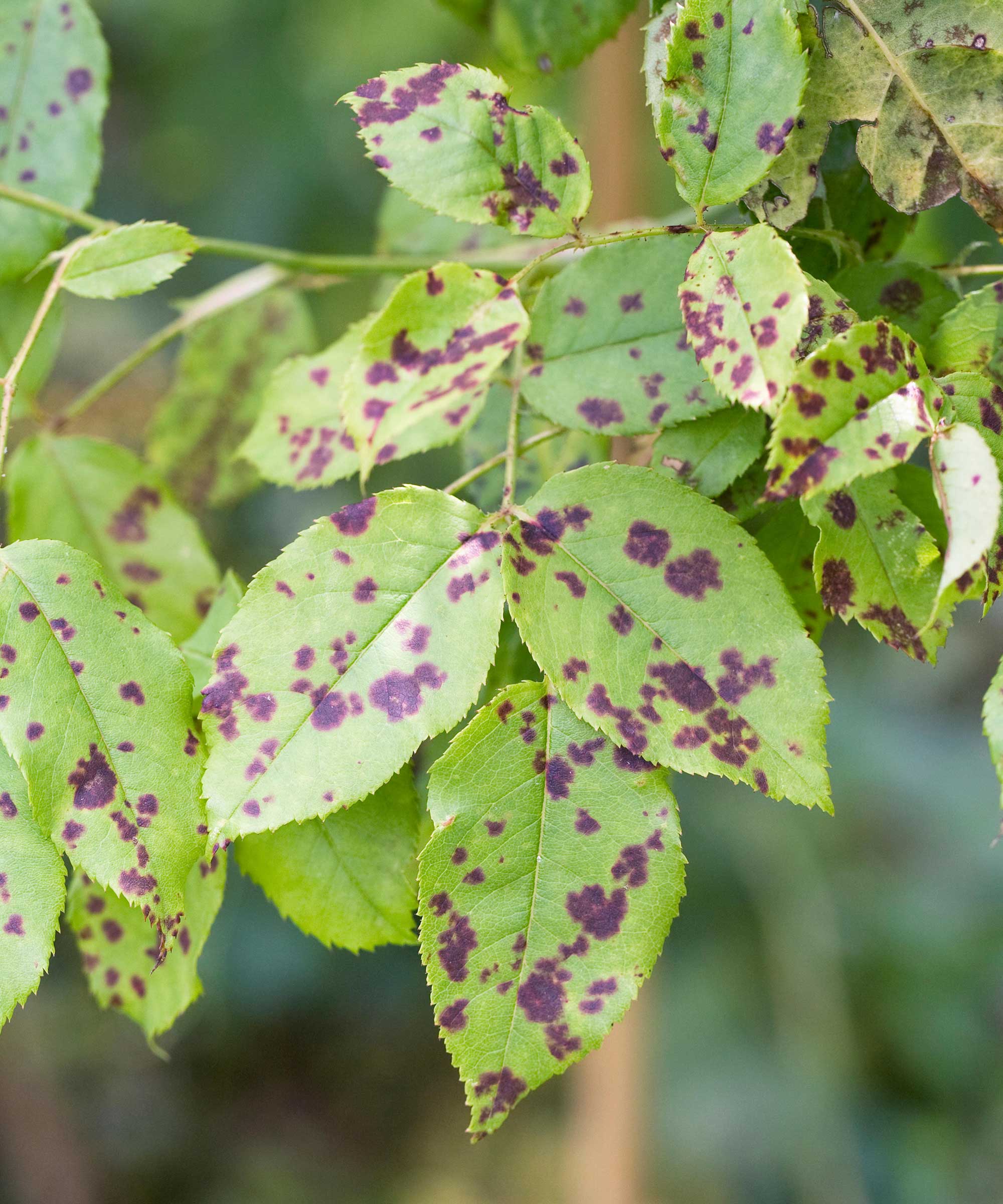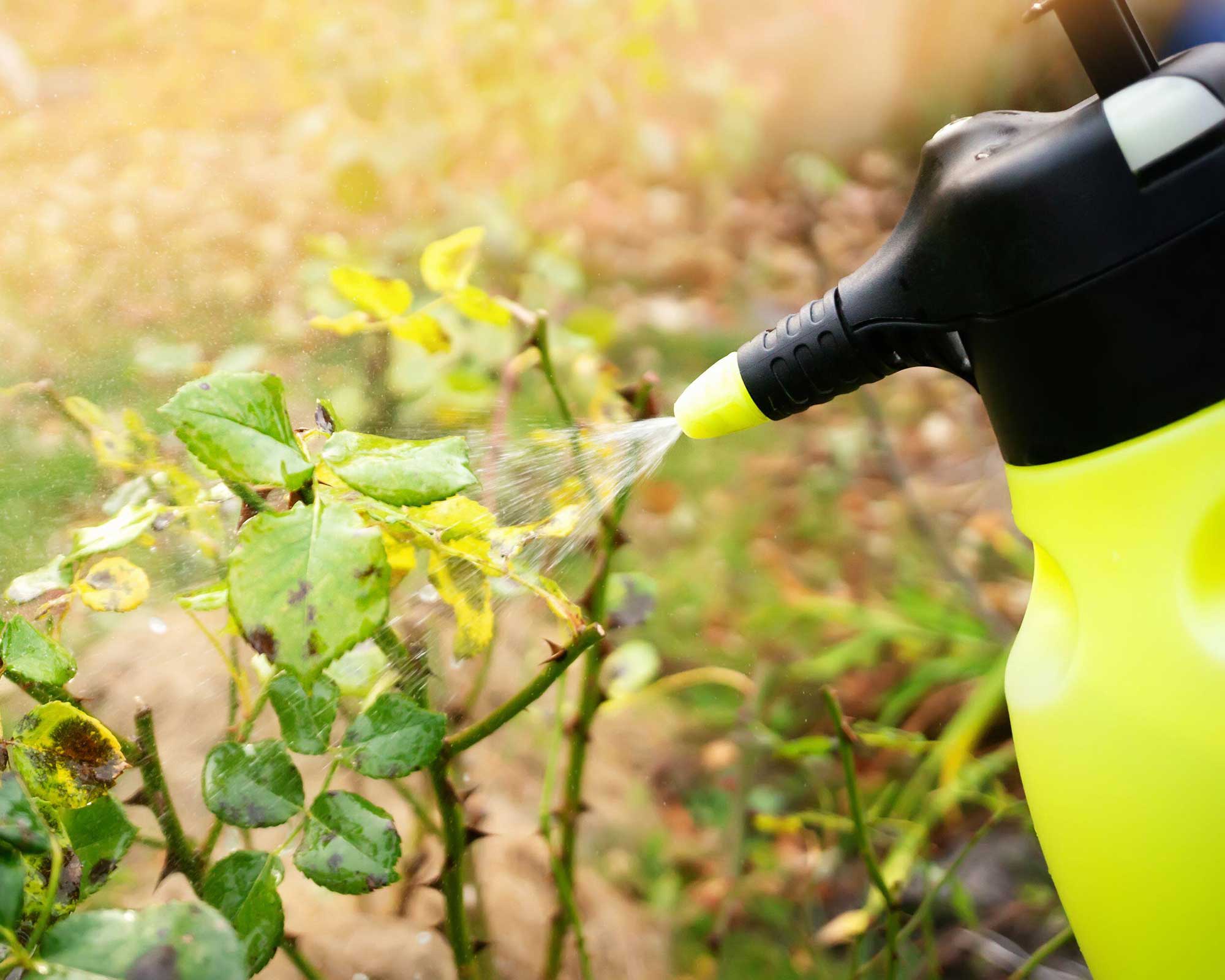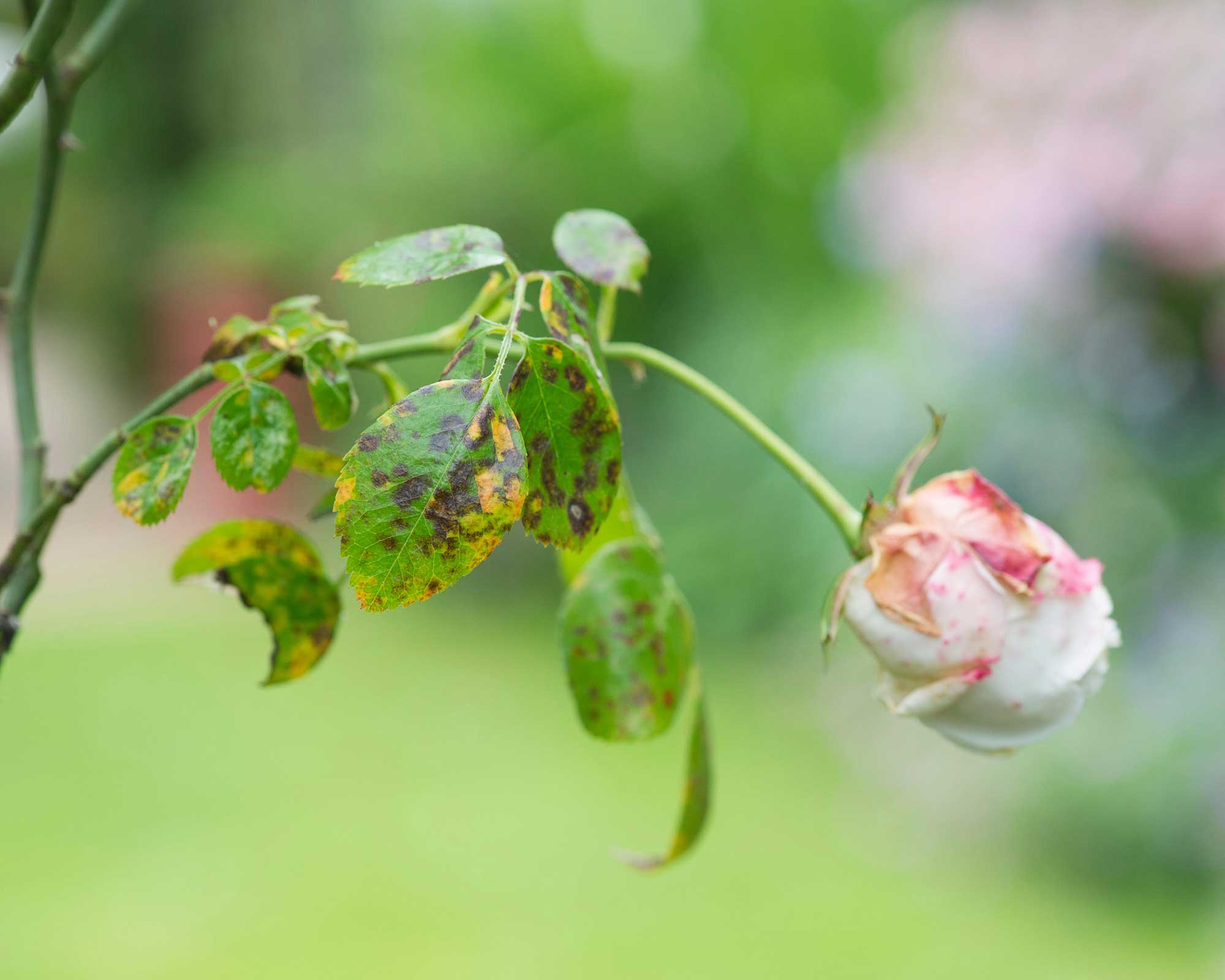Rose black spot: how to identify, prevent, and treat this common plant disease
Our guide has everything you need to know about rose black spot to keep your precious blooms healthy


The dreaded rose black spot is a common woe amongst growers of these beautiful, fragrant blooms. So if you're planning on planting some in your backyard, you'll definitely want to know how to avoid it.
A serious, fungal disease, scientifically known as Diplocarpon rosae, it diminishes vigor of growth dramatically and causes markings on the foliage. In severe cases, the leaves will drop off completely. But, there are a few rose care tricks and tips you can do to reduce the risk of black spot occurring.
Roses are a gorgeous addition to any garden planting scheme, from cottage-style to contemporary. So, to help you keep yours looking tip-top, we explain how to avoid black spot, how to identify it, and what to do if your plants become infected.
How can you identify rose black spot?
As Amateur Gardening expert John Negus says, most types of roses suffer from black spot at some point. But, if you do see it on your plants, don't despair – 'many bounce back with a little care.'
Signs of the disease can appear in spring, although it tends to be at its worst in warm, wet summers.
The fungus itself is genetically very diverse – as the RHS explains – with new strains rapidly arising. However, you are likely to see some of the following symptoms:
- Black or purple patches appearing on the tops of leaves, sometimes with the surrounding tissue turning yellow.
- Infected leaves falling off.
- Small, scabby, black lesions appearing on young stems of the plant.
- Reduced vigor.

Black markings will spread across the foliage of infected plants
How do you treat rose black spot?
Spotted this disease in your precious borders or flower beds? Try the following steps for rose black spot treatment:
- If you've found black spot on your rose, spray the plant with a systemic fungicide, advises John. There are plenty available on Amazon.
- He also says to feed bushes with 1oz (28g) per m2 of sulfate of potash. Sprinkle it over the root area monthly, from mid-spring to early fall, and water it in. 'Potash strengthens growth and builds resistance to infection.'
- 'In autumn, bin the fallen leaves before they disperse spores into the soil,' John continues. Make sure you are vigilant in clearing them away – any left over are a potential source for re-infection.
- Then, get mulching – a thick layer will trap spores in the ground. 'Like many fungal diseases, black spot is spread through water splash and if the spores are buried under mulch they can't be splashed onto the leaves.'
- When pruning roses in late winter, make sure you remove any stems showing signs of lesions that can also release spores, he adds. Clean your secateurs thoroughly before and after to prevent the disease from spreading.
- Next year, spray again with fungicide before signs of disease appear.

Spray infected plants with a fungicide
How do you avoid rose black spot?
With some plants, cultivars have been specifically bred to have resistance to common diseases. For instance, 'Crimson Crush', amongst others, is a type of tomato that is particularly resistant to tomato blight. However, rose cultivars that are bred to be resistant to black spot don't stay resistant for long. As the RHS explains, they are generally overcome by the disease as new strains of the fungus arise.
But, there are still a few things you can do to try to keep black spot away from your roses in the first place.
Proper maintenance is always important for healthy plants. 'Liquid feed your rose weekly and alternate with a fertilizer that contains good levels of nitrogen for strong, leafy growth,' says John.
Also, try to improve the airflow around your plants – doing so will discourage the growth of fungus, which does best in damp, humid conditions. It's good practice to avoid watering your plants from above, too, to try and keep the foliage as dry as possible.

Regularly feeding roses and making sure there is good airflow around them can help prevent black spot
Can cornmeal protect roses from black spot?
Cornmeal, better known as cornflour or polenta, has been said to help protect plants from rose black spot. This is because it contains a fungus called Trichoderma which destroys the fungus.
'The advice given is to spread a handful around the base of a rose bush in spring as the buds start to appear,' says John. 'Work it into the soil, water in, and mulch.
'Repeat this once a month during the growing season and the rose should remain free from black spot. It won't cure any affected leaves, but it will keep all new growth clean, which is why it is best applied as the buds are beginning to open.'

The garden was always a big part of Holly's life growing up, as was the surrounding New Forest where she lived. Her appreciation for the great outdoors has only grown since then. She's been an allotment keeper, a professional gardener, and a botanical illustrator – plants are her passion.
